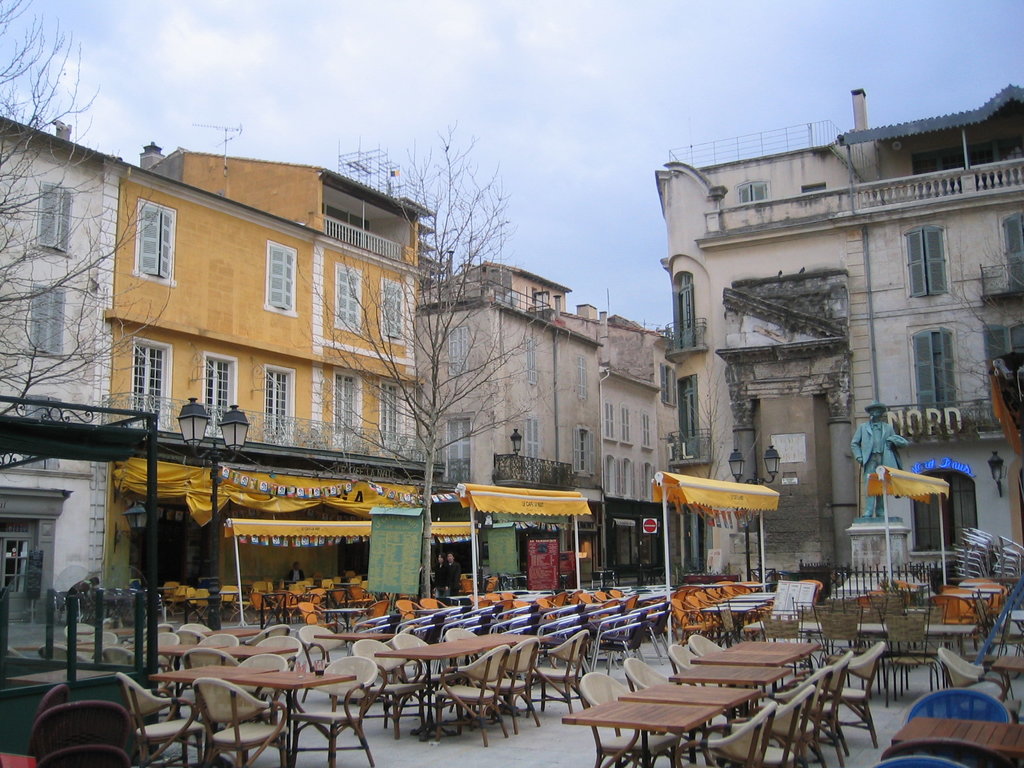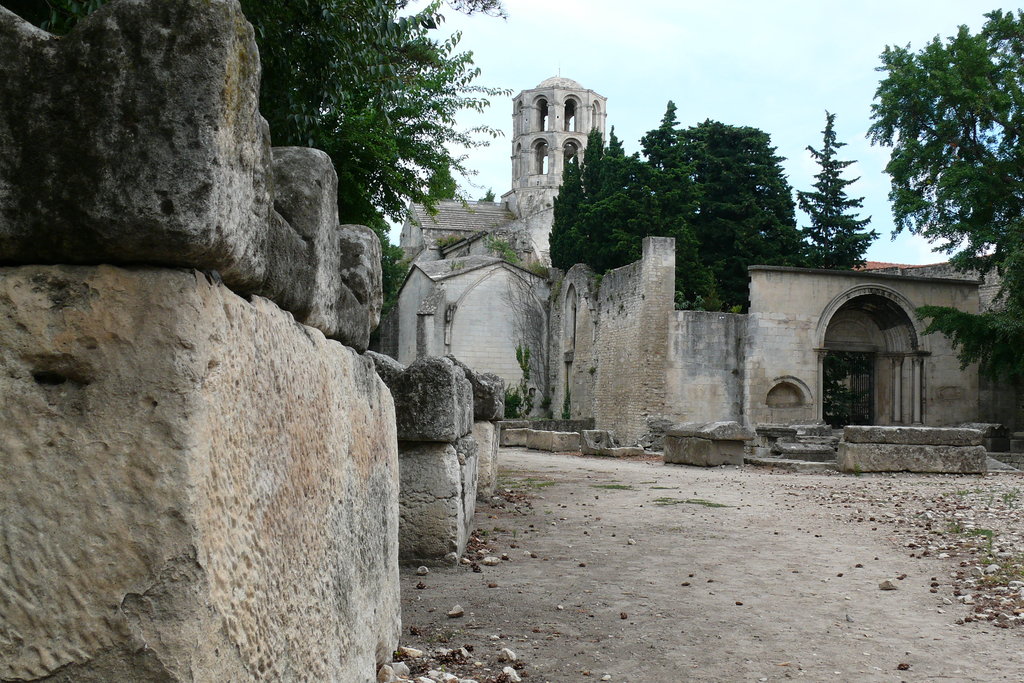Arles in Vincent Van Gogh’s footsteps
“The city of Arles, in Provence, was a very important place in Vincent Van Gogh’s artistic life. It was also the scene of some significant events in his personal life. It was there, inspired by the light, that he perfected his unique style and painted his major works. During his time in Arles, he produced more than 300 paintings and drawings. Discover his favourite places in the city.
1-The Yellow House
——————
When he arrived in Arles on February 20, 1888, the painter was captivated by the beauty of the Arles countryside and the radiance of Provence. Seduced by the southern landscape and its colours, he found a home in a famous yellow house that he immortalised in a painting with this title.
The painter rented four rooms and set up his studio in this house, located in the Cavalerie district. He dreamed of creating a community of avant-garde painters. Unfortunately, the yellow house was destroyed by bombing during the Second World War.
2-Vincent Van Gogh’s bedroom
——————————–
Van Gogh painted three versions of his bedroom in the yellow house, one of his most famous paintings, recognisable by his large wooden bed. The first painting is in the Van Gogh Museum in Amsterdam. The bed, which dominates the scene, is in sunflower yellow typical of the painter’s works. In the second version, which can be seen at the Chicago Institute of Art, the colours seem more faded and the bed is brown. The third version, which returns to the original colours, is smaller. Van Gogh gave it to his sister as a gift and it can now be found at the Musée d’Orsay in Paris.

Van Gogh’s bedroom in Arles, 1888
3-Van Gogh’s friendship with Paul Gauguin
—————————————–
Van Gogh was friends with the painter Paul Gauguin, and he was looking forward to meeting in Arles. Gauguin came to visit and stayed with him in the yellow house in October 1888 for a little over two months. Unfortunately, the two artists did not always get along. Gauguin did not agree with Van Gogh’s dissolute life, associating with prostitutes and spending too much money. They also had artistic differences. Gauguin believed that artistic work should be based on imagination. Van Gogh thought it should be inspired by nature. Gauguin left after a violent episode where Vincent threatened him with a knife. Not long after, Van Gogh cut off a piece of his left ear – a sad episode in his deteriorating mental health.
4-La Place du Forum and Café at Night
————————————-
When walking in the evenings, Vincent liked to frequent cafés with lively terraces, welcoming the night life of drinkers and walkers. It was here that he drew his inspiration to paint Café Terrace at Night. The famous Le Soir café still exists and is located at 11 Place du Forum. Today, you can still see the café and imagine the painter walking the streets of the district dreaming of his future paintings.

Place du Forum, Arles
5-The Quai du Rhône and other favourite places of Vincent Van Gogh
———————————————————————-
Van Gogh liked to walk around Arles and its surrounding area. He was particularly fond of the banks of the Rhône, the Trinquetaille bridge and the old windmill on rue Mireille. Today, a tourist trail makes it easy to find these sites thanks to a marked route.
6-Following in Van Gogh’s footsteps at night
——————————————–
Van Gogh liked to walk in the evening, observing the sky, the stars and the effects of the moon on the landscape. Starry skies are among the painter’s most fascinating works. In his letters to Gauguin and to his brother Theo, he describes his walks, projects and works. He is obsessed with one idea: to paint the night and its wonderful stars. He often describes its colours and motion in his correspondence.
In September 1888, he painted Starry Night Over the Rhône, where the city lights are reflected in the water, a few minutes’ walk from his home. This painting is the pre-cursor to his famous Starry Night, which he painted a year later from his view of a window in the asylum of the Saint-Paul-de-Mausole monastery.

Starry Night Over the Rhône, 1888
7-The Arles countryside in Van Gogh’s work
——————————————
Beyond the city itself, one of the themes that dominated Van Gogh’s life during his stay in Arles was the Arles countryside: its sunflower fields, orchards, bridges and buildings. He spent a large part of his time outdoors, painting or drawing landscapes dominated by yellows and blues.
8-The Langlois or Van Gogh bridge
———————————
During his walks, Van Gogh carefully observed some of the key spots of Arles, such as the Langlois bridge, now known as the Van Gogh bridge. The drawbridge can be found on the canal from Arles to Bouc. The painter was fascinated by this bridge because it reminded him of his homeland, the Netherlands and its many canals. He painted and/or drew it more than ten times.
Interesting fact: the bridge made famous by Van Gogh and the one that can be seen today, a few kilometres from the city centre of Arles, are not the same. The current bridge, located at another location in Fos, is a reconstruction of the original which was destroyed.
9-The Alyscamps
—————
During their time living together, Van Gogh and Paul Gauguin went to the Alyscamps. This necropolis dating back to Roman times inspired Van Gogh to paint two exceptional paintings in which rows of poplars can be seen, as well as Falling Autumn Leaves. Gauguin was also inspired by the site.
Here, it’s interesting to compare the approach of the two artists. While Gauguin painted the ruins, Van Gogh turned his back on them, preferring the poplars. This different perspective illustrates the differences between the two artists.

Photo credit: Hawobo under CC BY-SA 2.0 license
10-The Vincent Van Gogh Foundation
———————————-
A trip to Arles following the footsteps of Van Gogh would not be complete without a detour to the Vincent Van Gogh Foundation. It pays tribute to his work while exploring his relationship with contemporary art. There are exhibitions and many activities for visitors of all ages, such as screenings, guided tours and even courses. Another way to learn more about one of the most important painters in the history of modern art is to spend a half-day in Les Baux and Arles, following in the footsteps of Van Gogh.”
More Articles With Art
Discover the very best museums and galleries through virtual tours. From London to New York, explore these online museums without leaving your home!
Find everything you need for a fun visit to the York Art Gallery with this comprehensive visitor’s guide.
Discover the top art galleries in London to experience some history and culture on your holiday.
Discover the top art galleries in Manchester to experience culture and history on your next holiday.
Visiting the spas and Georgian buildings of Bath? Check out our visitor’s guide to the Fashion Museum.